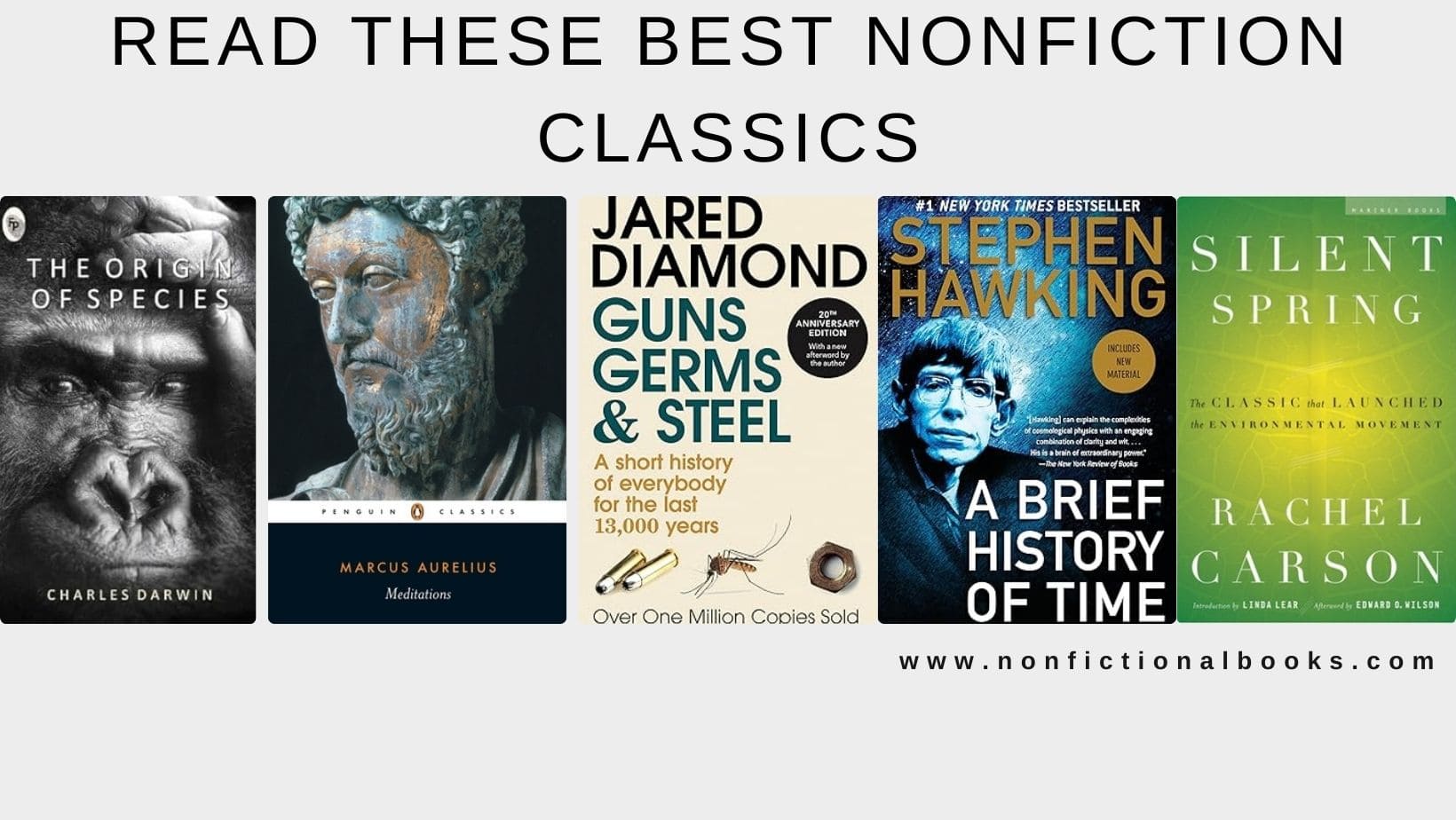The most crucial genre in non-fiction is classic, which helps you discover yourself, makes you think about philosophies, and enables you to explore different perspectives. These non-fiction classic books capture real-life incidents and a person’s narrative about them. Non-fiction is the literature that provides fact-based perspectives and information concerning different ideologies. These writings tell about historical events, sometimes the narrator’s personal life, sufferings, or social issues that need to be highlighted. In this blog, you are going to see the list of 20+ best non-fiction classic books.
So get ready to learn about some of the Best non-fiction classics with some of these great writers’ more dramatic techniques. Here is a list of a few of the most exciting nonfiction classics. Go through this overview, choose what to read, and contrast your ideas with those of the writer.
Essays by Michel de Montaigne
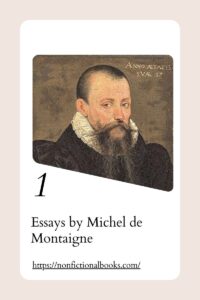
This collection of essays is captivating, exploring exciting topics like human existence with personal philosophy and distinctive perception. The author also weaved his thoughts about solitude, cannibalism, etc. You will also confront the potential of imagination, children’s education, and the essence of friendship. The author also tried to nurture the efficiency of being alone and how it affects the human psyche. You can also explore the importance of solitude and introspection through his narrative.
Another thought-provoking subject that is discussed in these essays is cannibalism; of course, the literal meaning is not used, but metaphorically, it is used for the consumption of various things.
Education and upbringing are also advocated in these essays.
The Emperor of All Maladies by Siddhartha Mukherjee
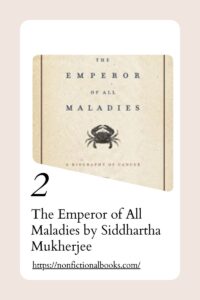
This book is a gem if you are fond of learning about science and research. Siddhartha Mukherjee, a renowned physician, researcher, and well-known science writer, has written this masterpiece on the complex subject of cancer with the precision of a cellular biologist, a historian’s perspective, and a biographer’s passion.
This compelling narrative weaves together the threads of human ingenuity, resilience, and perseverance and the darker elements of hubris, paternalism, and misperception in the face of cancer. Mukherjee skillfully explores hundreds of years of disclosures, difficulties, wins, and misfortunes, introducing the adventure from the perspective of his ancestors. The foe in this story is the disease itself. This boundlessly clever enemy was hopefully accepted to be effectively defeated in a comprehensive “battle against cancer” just thirty years prior.
The Emperor of All Maladies” provides a glimpse into the future of cancer treatment and captures the historical trajectory of cancer research. Through Mukherjee’s words, the peruser is taken on an excursion that rises above time, offering trust and transparency to those attempting to demystify the disease’s intricacies. Mukherjee’s multi-layered approach, mixing logical understanding with historical touch and personal components, makes a story that resounds with insight and feeling.
Silent Spring by Rachel Carson
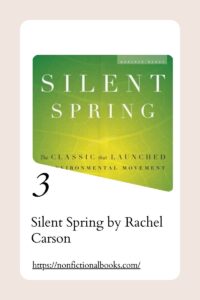
Silent Spring” by Rachel Carson emerged as a seminal work that sounded a critical alarm about the environmental and human hazards associated with the indiscriminate use of pesticides. This notable book catalyzed groundbreaking changes in regulating air, land, and water, permanently imprinting natural mindfulness.
Carson’s compelling story, recognizing its 40th commemoration, worked as a hit and resounded universally, starting an influx of ecological consciousness. The impact of “Silent Spring” reached out past its nearby readership, procuring its place among Time’s 100 Most Influenced Individuals of the 100 Years.
Carson’s story unfolds with a clarity and boldness that recognizes her as one of the foremost voices in American letters. This commemorative edition features a new introduction by Terry Tempest Williams, an author and activist who sheds contemporary light on Carson’s legacy.
Moreover, the acclaimed Rachel Carson biographer Linda Lear contributes a new afterword, offering bits of knowledge into Carson’s fearless guard of her disclosures against a determined attack from the chemical industry. The story digs into the year following “Silent Spring” distribution and gives an impactful background to Carson’s troublesome demise in 1964.
Rachel Carson’s getting through influence is apparent in the ecological strategy changes set off by her work and her courage, even with opposition.
A Brief History of Time, by Stephen Hawking
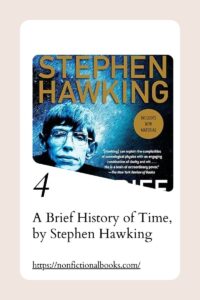
Stephen Hawking, the scientific luminary, presents the Updated and Expanded Tenth Anniversary edition of “A Brief History of Time.” A New York Times smash hit, this spearheading work digs into significant inquiries concerning the universe, giving open experiences into the secrets of presence.
Inside the pages of this influential book, Hawking tackles fundamental inquiries, unraveling the mysteries of the universe’s origin, the constant flow of time, the infinite or limited nature of the cosmos, the vastness of space, and the ultimate fate of our reality. This scientific work is written in a way that makes complex ideas like antimatter, quarks, black holes, arrows of time, and the Big Bang more understandable to laypeople.
The vital elements of this version include a progressive point of view of the universe’s insights and the expansion of another part on wormholes and time travel. The book returns to the current substance with new knowledge and introduces readers to cutting-edge concepts that have emerged in the scientific landscape.
Hawking’s narrative is not merely a scientific exposition but a journey into the imagination, where he brings vivid images to life. His splendid mind is a directing light, enlightening readers about the universe’s mysteries in a manner that rises above conventional logical writing.
Guns, Germs, and Steel by Jared Diamond

Guns, Germs, and Steel: The Fates of Humans by Jared Diamond, a transdisciplinary, genuine work of art distributed in 1997, complicatedly investigates the verifiable directions of civilizations throughout recent years. The book “A Short History of Everyone Throughout the Previous 13,000 Years” in England means disentangling the intricacies behind why specific social orders, especially in Eurasia and North Africa, have persevered and prevailed over others.
Jared Diamond strongly disputes the idea that Eurasian dominance stems from inherent advantages like intelligence or genes. He proposes a more nuanced thesis: the different fates of societies resulted from the uneven distribution of environmental resources that created advantages over time. Diamond argues that these gaps in power and technology are due to geographical factors, not some inherent racial or intellectual superiority.
In the broader context of the book’s transdisciplinary approach, Jewel handily winds around geology, human sciences, history, and biology components to comprehensively comprehend the powers that have molded human social orders. Through indisputable cases and broad exploration, he welcomes readers to ponder the unpredictable web of variables impacting the rise and fall of human advancements.
Meditations by Marcus Aurelius
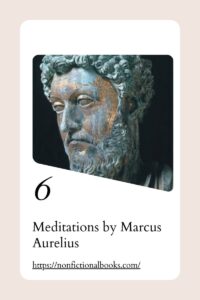
At its core, “Meditations” encapsulates the distilled thoughts of Marcus Aurelius, a Roman head and indifferent rationalist whose reflections have risen above the limits of time. The philosophical wealth of this work welcomes readers into an excursion of self-disclosure and introspection, offering an embroidery of experiences that are as significant today as they were in old times.
Resilience—the art of perseverance and composure in the face of hardship—is one of the book’s central themes. Drawing from his leadership experiences, Marcus Aurelius provides important examples of confronting difficulty with a consistent psyche and a courageous soul. His appearance on flexibility reverberates as a directing light for those looking for strength in the face of life’s inevitable trials.
The concept of self-discipline is woven intricately throughout the pages of “Meditations.” Marcus Aurelius explores the dominance of one’s viewpoints, activities, and feelings, stressing the groundbreaking force of trained reflection. The philosophical standards explained in the book act as a pragmatic aid for people trying to develop self-control and harness their inner strength.
Central to the timeless appeal of “Meditations” is its exploration of inner peace. Marcus Aurelius offers profound insights on finding tranquility amidst life’s tumultuous currents. His reflections encourage readers to seek a serene center within themselves, providing a compass for navigating the complexities of existence with equanimity.
On the Origin of Species by Charles Darwin
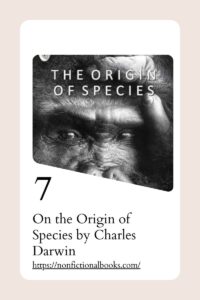
Delve into the groundbreaking scientific legacy of Charles Darwin with this edition of “The Origin of Species.” A fundamental work that has changed our perception of the everyday world, this book has remained a foundation throughout the existence of science, molding the course of developmental hypotheses. Enhanced with another presentation and critique, this version offers a convincing excursion for anybody charmed by the verifiable underpinnings of how we might interpret development.
First written by Charles Darwin, “The Beginning of Species” addresses a turning point in logical ideas, testing winning thoughts and introducing a change in outlook on how we might interpret the variety of life on the planet. This edition provides readers with a window into the intellectual landscape that reshaped the biological sciences and serves as a testament to the enduring significance of Darwin’s insights. This edition of “The Origin of Species” notifies Darwin’s notable logical work and the transformative hypothesis’s continuous exchange and development.
In Cold Blood by Truman Capote
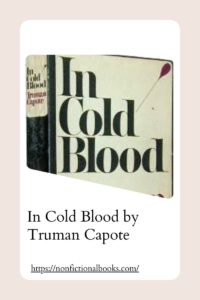
Truman Capote’s “In Cold Blood” goes beyond true crime, treasuring it as a writer’s catnip. A 1966 book, which perfectly reenacts the Clutter family murders in Kansas during the year 1959, it doesn’t make much of a difference between fact and fiction. The brilliance with which Capote, via his narrative, probes the inner secret of both the victims and their tormentors is simply spellbinding, producing a grim yet intricate picture of human nature.
By bringing life to the words and discovering details through hard work, the writer is helping to create a story that shows the foundation of evil and the instability of innocence. “In Cold Blood” causes the readers to make tough choices about the evils of society, morality, and violence, thus leading them to the development of a new genre of literature in true crime stories.
The warmth of other suns by Isabel Wilkerson
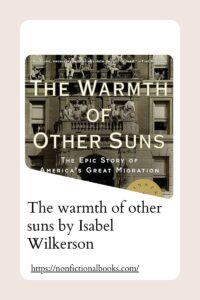
The famous “The Warmth of Other Suns” by Isabel Wilkerson is a collection of remarkable stories about the Great Migration, one of the most significant events in the history of the United States. Which was initially published in the year 2010; she told the sad stories of three people representing the millions of African Americans who decided to get away from the racist humiliations and conditions of Southern Jim Crow into the western or northern states to secure better lives. On the pages of Wilkerson’s book, historic migrations inspire her to document not only the effects on the politics, culture, and society of the United States but also on the nation itself.
A room of one's own by Virginia Woolf

Ever since its publication in 1929, Virginia Woolf’s feminist masterpiece “A Room of One’s Own” holds a cherished place among admirers of the movement. In Woolf’s famous essay, she argues that women must have both their finances and a place to create things to become self-sufficient. Toward that end, she shows her superiority by using very high prose and frank statements, weaving her keen observations, which have demonstrated that the patriarchal system that has always oppressed women in the field of literature in the past will never again exist. “A Room of One’s Own” is a poignant reminder of the continuing struggle for equality and artistic identity and a piece that has an enduring influence throughout history and culture.
A double helix by James D. Watson
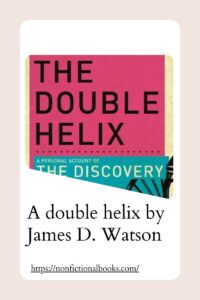
James D. Watson’s “The Double Helix ” is the most enchanting memoir in which Watson tells about the unique and controversial race for discovering how DNA is constructed. Written in 1968 and to date primarily considered as the critical, creative offering of this work, Watson introduces the reader to the exciting and accurate tale of a scientific pursuit which, given the result obtained, should rightfully be considered one of the outstanding breakthroughs in biology. Despite this reservation about the representation of Franklin, the book is still a landmark, expounding to us scientific processes, not to mention the human dynamics behind the world-famous discoveries.
Hiroshima by John Hersey
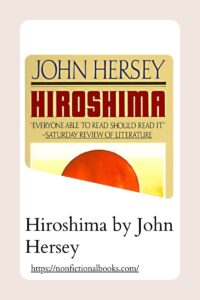
John Hersey’s article “Hiroshima” is an emotionally charged and horrifying truth of the atomic bombing of Hiroshima that resulted on August 6, 1945. Published in 1946, Hersey’s masterpiece is a case of journalism skill because the work is about six survivors’ lives and what they went through after the catastrophe. The writer’s characters’ main feature is that we can feel the atomic bomb horror caused by the nuclear bomb through means of their difficult life.
He goes beyond strict politics, concentrating on the narrative of private individuals who simultaneously find themselves involved in the most complicated circumstances. Hiroshima is an enduring token of the consequences of war and a transformative process – leading people to omit the realities of the factor of nuclear bomb weapons from the peace agenda.
Man's search for meaning by Viktor Frankl
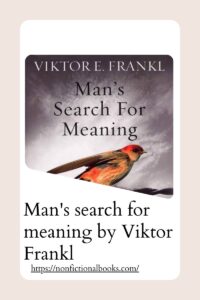
Through “Man’s Search for Meaning,” Viktor Frankl tells a story about the human soul that can uncover the sense and the purpose even when forces that are not necessarily familiar to a human being bring catastrophes to life into the world. Logotherapy, an approach proposed by the author, who is a Holocaust survivor, was published in the same year and is written based on his personal experience – in 1946, Frankl drew on his own Holocaust survival. Despite having a more generalized form, Kant’s writing reveals his teachings on the essence of life through carefully chosen and sophisticated stories and ideas that indicate that life’s meaning is derived from pursuing one’s unique duties and bearing suffering through courage and grit. Through his vast tackle with the topic, Frankl has unleashed optimism for millions of people around the globe, who now pay homage to this profound experience of deriving hope in times of despair and an exceptional subject of consummating agony intonely a meaningful existence.
The Selfish Gene by Richard Dawkins
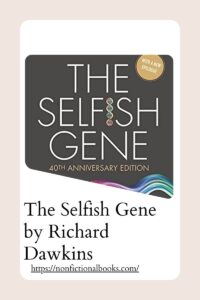
“The Selfish Gene” by Richard Dawkins triggered a paradigm shift in our view on evolution and genetics that can be compared with NASA sending the first astronauts into space or discovering the DNA structure. Dawkins’s novel has significantly changed the paradigm, sending genes down to the basic level of evaluation. He illustrates that genes, while they are chasing their survival and replication, are involved in the modulation of behaviour and generation of biological features. Dawkins appears quite inciting as he attempts to prove that genes possess specific traits so that the organisms, both humans and non, can transport genes, resulting in a selfish gene interpretation of evolution. However, his book stones on a controversial part, but it is cleverly presented in two dimensions – human beings and their underlying mechanisms of life as well as changes in the conventional views on altruism and cooperation.
The art of war by sun tzu
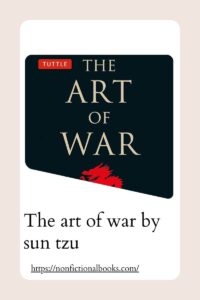
Sun Tzu’s “The Art of War” is a twenty-thousand-year-old masterpiece on strategy that also covers warfare. It was written in ancient China. Even though initially pronounced within the framework of an armed conflict, these perceptions incorporated universal issues of leadership, conflict resolution, and decision-making. Sun Tzu emphasizes knowledge of oneself and the enemy as the essential components of the strategy.
The strategy should be designed synergistically using strength, the ability to adapt to a given situation, and diplomacy to obtain an advantage over the opponent. The principles he preached in history, like business, politics, and sports, keep influencing a range of disciplines. An example of such a principle is insight, deceit, and the art of winning a conflict without having to fight necessarily. “The Art of War ” is timeless and will always remind us that any virtue for success is everything but strategic.
The year of magical thinking by joan didion
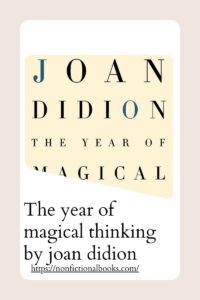
The magnetic piece of literature, “The Year of Magical Thinking,” by Joan Didion, excellently charts the bewildering journey that being swallowed up by the heavy blanket of grief can take a person through. Back in 2005, it tells a story about Didion’s hardship following her husband’s, Mr. John Gregory Dunne’s, unexpected death and the severe illness afflicting her daughter. She tells the story from the bottom of her soul with elegant writing and other emotions, such as rational hope and mad denial, that can keep people in mourning. She perceives herself and guides the audience through the fragility of life and the human spirit’s resilience.
Notes of a native son by James Baldwin
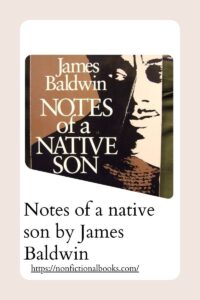
The delicate piece by James Baldwin called “Notes of a Native Son” is a collection of poignant essays that reflect on the challenges of racial discrimination, intimate self-confrontation, and belongingness in America. First appearing 65 years ago, Baldwin continues to put his incisive and piercing words on racial issues that have psychological and social implications in a society that is separated at its core.
Breaking down his point by cutting personal experience or the question-and-answer format, he puts the naked weight of racism before people and helps them see the ugly truth of oppression. Baldwin’s expressive prose and unapologetic frankness still shake us today, as they embody the long battle to achieve equal rights and the effort to come to grips with one’s true identity in an unjust world.
Homage to Catalonia by George Orwell
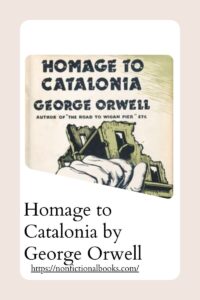
In his “Homage to Catalonia,” the nuanced narrative of George Orwell’s participation in the Spanish Civil War depicts him as a hardened and battle-ready soldier. The book was published in 1938. While considered a classic today, it portrays the typical chaotic traits and disorderliness, the reiteration of which makes it evident that Orwell did not experience a good or even fair war.
He spares no criticism of the conflicting political parties, including internal faults; on the other hand, he also noticeably mentions the glorious struggles of ordinary people fighting for their perceptions. Such is Orwell’s acute perception and convincing storytelling, which puts the audience in the right spot to grasp the complexities underlying an ideological conflict and the worth of freedom.
The right stuff by tom Wolfe

In his masterpiece called “The Right Stuff,” Tom Wolfe encaptures the space race drama and introduces some of the people involved in the history of space. Wolfe did this work in 1979 and depicted the lives of the Mercury Seven astronauts; the cover of American ordinariness, heroic feeling, ambition, and courage was portrayed in the book.
Traveling through history times using immersive storytelling and ethical research, he shows us the scourge of competition, the political pressures, and personal sacrifices as the actual charges of the propagation of famous people. Wolfe’s novel becomes a cinematographic rendition of the Space Program’s emotional triumphs and tragic moments alongside the protagonist’s overly emotional state that mainly borders these moments.
The sixth extinction: an unnatural history

“The Sixth Extinction: In her celebrated work, “An Unnatural History,” Elizabeth Kolbert vividly shows how our species is now responsible for the Great Dying of most life on the planet, central to the dominant reasons for extinction. A work of Kolbert’s dedicated approach, published in 2014, stretched the boundaries of the concept of biodiversity with outstanding descriptions and an engaging narrative on the issue of ecological collapse. She evaluates various aspects of such phenomena as deforestation and climate change, which have caused the loss of species diversity. Among them are, but not limited to, a decimation of the biodiversity of species. Still, the apocalyptic forecast has a gentle counterpoint by marking measures to keep natural life and repopulate the existing ecosystems.
A short history of nearly everything
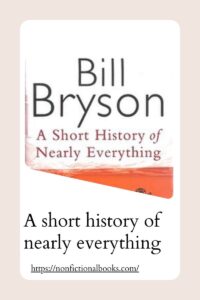
Professionally, “A Short History of Nearly Everything” by Bill Bryson unravels a breathtaking voyage of science and the marvel of the universe. Furthermore, the smashing of the atom in 2003 and Jenkinson’s good book (Bryson) cannot be downplayed in the history of literature. Jenkinson masterfully uncomplicates hard-to-understand ideas into a clear and entertaining read. Skilfully and inquisitively, he teases out the narratives of discoveries by prominent scientists that have defined patterns in our minds. Among Bryan’s major strengths discussed here is his approach to depicting nature, which is both humbling and inspiring, from the very origins of the universe to the dazzling simplicity of life in DNA.
Let us now praise Famous Men by James Agee
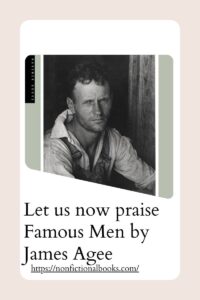
James Agee’s “Let Us Now Praise Famous Men” is a poignant and reflective account of the plight of poverty in America, witnessed once during the Great Depression. Produced in 1941, a collaboration of Agee’s and Evans’ work strives for authenticity in investigating Southern sharecroppers living in the area during the Great Depression. The sheer power of critical writers lies in their practical usage of pen and camera. They show the disheartening state of the deserted settlements pictorially and in prose. When the lyricism in Agee’s writing goes beyond the simple notation and into the depth of human existence and inequality, it is hard not to think about the fundamental questions about human existence and societal inequality.
Conclusion - Non-Fiction Classic Books
In conclusion, these are some of the best nonfiction classics by Non Fictional Books that help you explore life’s natural beauty and expression. Every classic writer has a different philosophy about everything; you can relate to it or find some contrasting ideas.
Some nonfiction classics have a timeless age because of their universal themes. These themes make sense because they will teach you about the complex world around you.
So, choose your pick from these best nonfiction classics and find out what you want, or you can try out our humorous collection.

